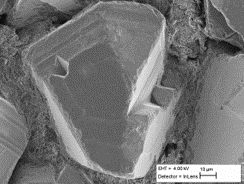Adapting Crystalsol product to a moon environment
| Programme: | GSTP | Achieved TRL: | 2-3 |
| Reference: | Small Studies | Closure: | 2016 |
| Contractor(s): | Crystasol (EE), Univ. Tallinn (EE) | ||
A first TRP activity investigated the polymers, suitable using in crystalsol solar cell manufacturing process and evaluate their compatibility with lunar environment; i.e. radiation exposure, temperature incursion and vacuum.

Objective
The first objective of the study was to find at least 4 commercially available polymers that can be used in forming monograin layer solar cell membrane. The main objective was to evaluate polymers compatibility with lunar environment (i.e. radiation exposure, temperature incursion and vacuum)
Achievements and status
From selected polymers Buehler® EpoThinTM 2, Desmdour® L75/1100, Tehnovit® EPOX were suitable in using crystalsol roll-to-roll solar cell manufacturing process, Epo-tek TV1003 LV was unsuitable, polymer didn’t form continuous layer. Suitable polymers were tested to find out their compatibility with lunar environment. All three polymers were very stable in vacuum, under intensive UV light, stand high (125 oC) and low temperatures (-150 oC), fast temperature changes (from 125 oC to -150 oC).
Benefits
We found additionally two polymers that can be used in crystalsol technology (EpoThin TM2 is currently used) and all these polymers can be used in space applications.
Next steps
Running similar test to the kesterite single crystals as absorber material and completed solar cells, in order to evaluate their compatibility to use as energy source at moon outpost.


